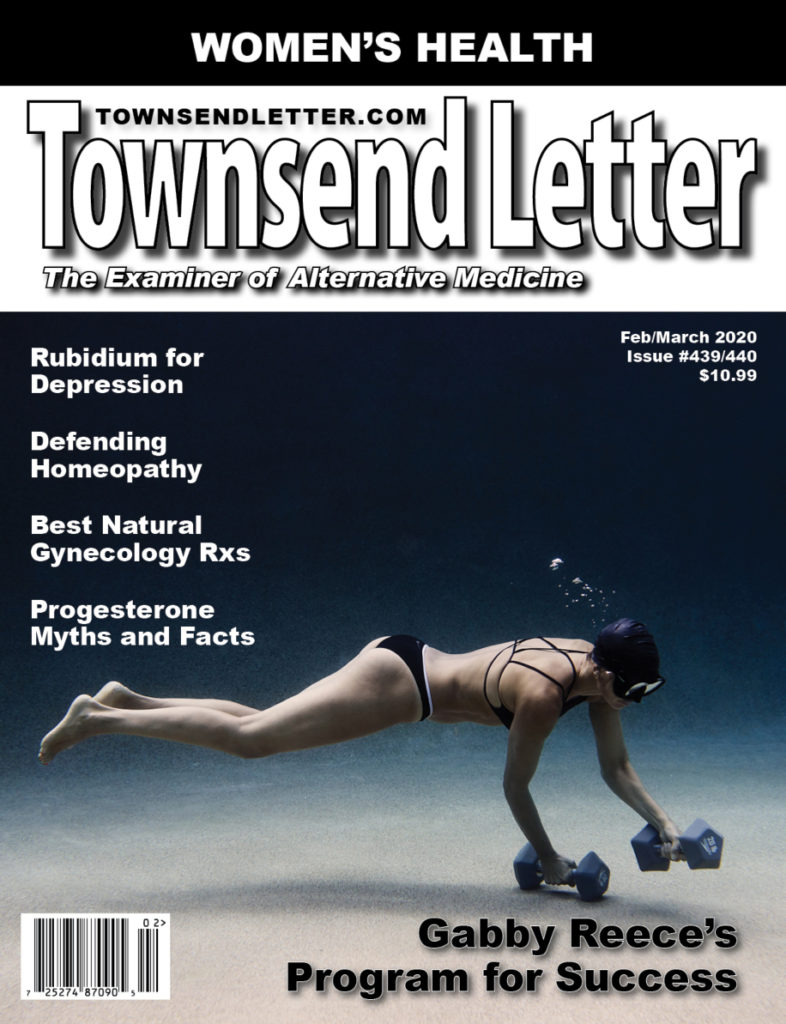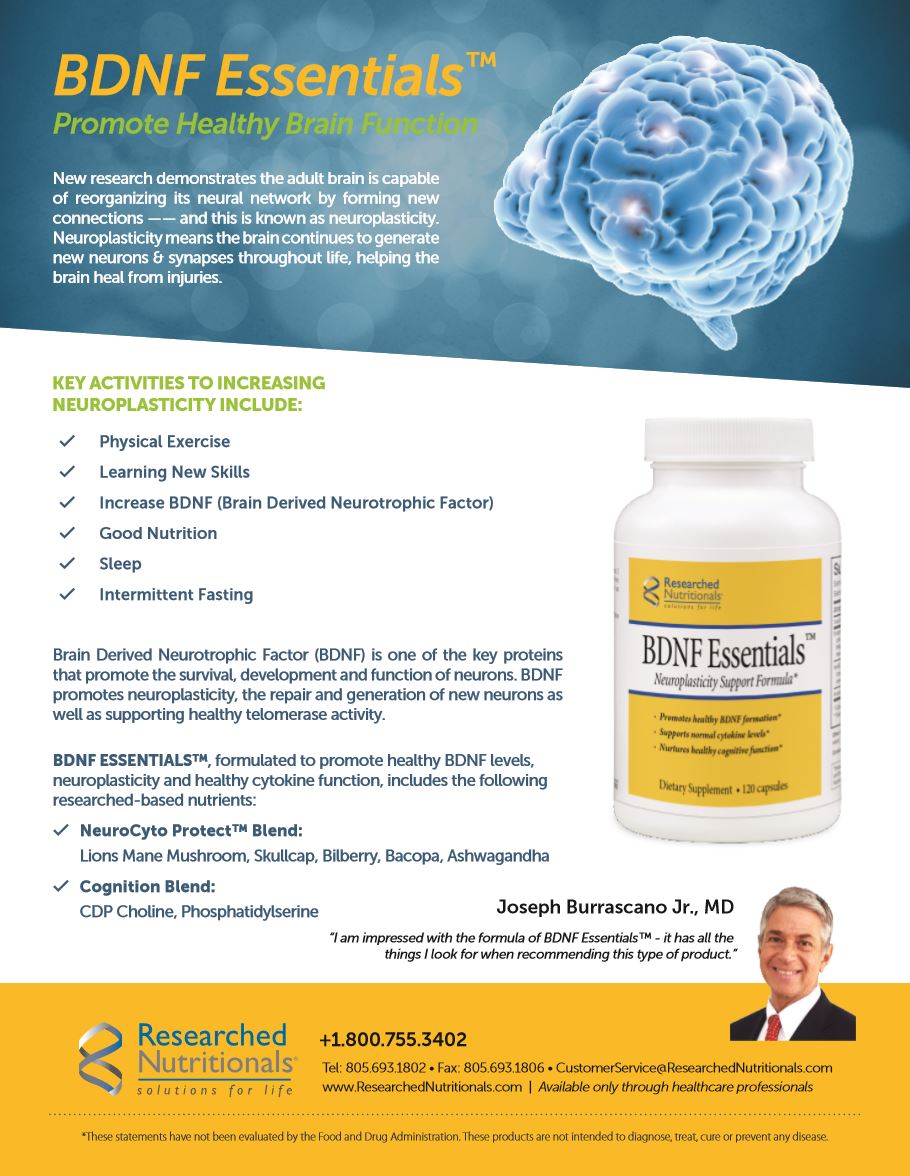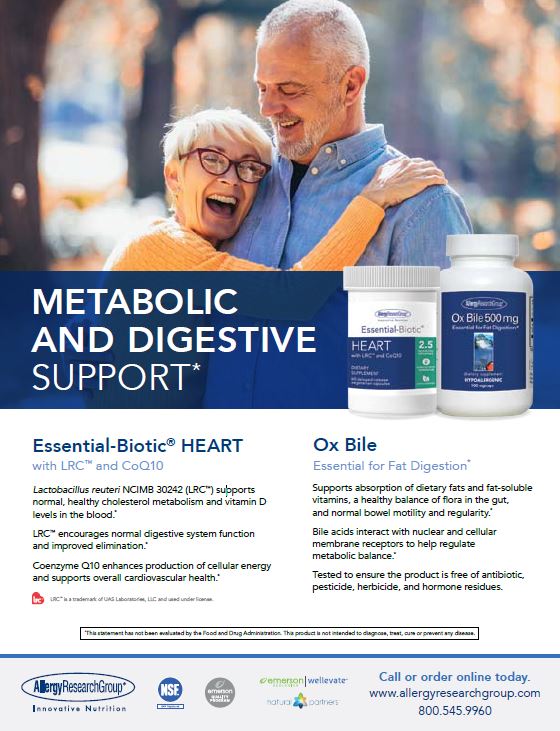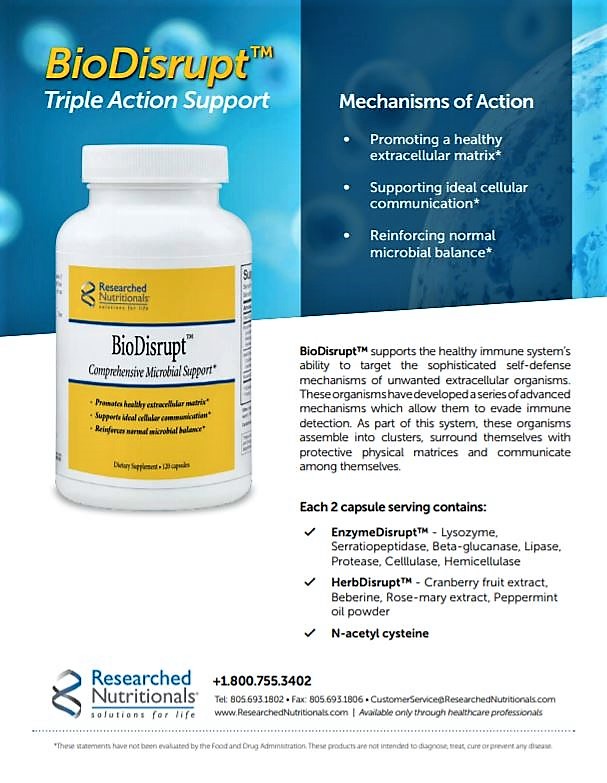By Karina Gordin, MSc

Total knee replacement hasn’t stopped world-class athlete Gabby Reece from training harder, performing longer, and recovering faster. Her secret to athletic longevity? A healthy lifestyle and positive mindset. “We all have setbacks, that’s reality,” notes Gabby. “But strong comebacks are also reality, even with a ‘fake knee.’ You don’t have to be an elite fitness and nutrition expert, just stay proactive with your health and get others involved.” So, with the support of her community, Gabby continues to challenge herself physically and mentally, to ultimately achieve athletic longevity— even with a ‘fake knee.’
KG: I understand you experienced chronic knee pain for close to 15 years, which culminated in a full knee replacement. What treatment options did you opt for before finally turning to surgery?
GR: Quite a few— I stayed very proactive. Traditional physical therapy was a fairly regular practice in my life. I received platelet-rich plasma. I worked with lasers. I did therapy localization. Before you get a knee replacement, particularly earlier in life, you try to exhaust all the options. As you mentioned, I dealt with the discomfort and decreased function for nearly 15 years, but it just got to a place where it really did not function.
KG: Considering the nature of your injury, alternative therapies like platelet-rich plasma (PRP) prolotherapy were not as effective?
GR: In my case, the injury was just too advanced. Generally, though, you’ll hear people getting great results with prolotherapy and similar therapies like Synvisc and stem cell. I strongly believe those should be first-line treatment options. I made sure to exhaust all my options, and more importantly, stay proactive. I have tons of friends who received PRP and either got long- term relief or complete restoration. In my case, I had a lot of lateral damage. I was close to being bone on bone, so, I was simply not the right candidate. But like I said, I know a lot of athletes who are very hard on their bodies and see great success with those alternative therapeutic modalities. I’m a big advocate because, look, what’s the worst that can happen? It doesn’t work. PRP doesn’t have any side effects, it’s not cost-prohibitive, and it’s not like you’re taking these radical risks, so I do recommend it.
KG: How did you sustain the injury?
GR: I will say this—I always try to remind people, and it’s even a reminder to myself, that my knee was a symptom. Yes, I incurred wear and tear playing volleyball, and I have long levers and I’m not naturally the most bendy person, but the truth of it is, my hips, ankles, and foot flexion were very tight— not adequately stretched— so I was inevitably prone to injury. Granted, I sustained repetitive trauma jumping, jumping, jumping, but my body wasn’t able to adapt and move in a correct pattern because I had such tight muscles, so the load got redistributed disproportionately to my knees. Unless you have a catastrophic injury, the pain is often just a symptom of something else. And you know, part of my homework even now with a “fake knee” is stretching the fascial tissue on my quads. They’re like rocks, so I constantly have to work at that.
KG: You’re constantly challenging yourself, and today you’re in top physical form. Over the years you have gained invaluable training experience, so what advice would you give your younger self?
GR: That’s an interesting question— the problem with athletes is that our training and our sport beat us up. We train, train, train, and pound our bodies so we can prepare for competition. If I could go back, I would train and improve my performance without continuously pounding my joints. For example, the last ten years I’ve been training in water so now I do dynamic, explosive, ballistic exercises without hammering my joints. I’d tell myself that more isn’t always more. Work smarter not harder. Also, I would really emphasize the connection between what I put in my mouth and my overall performance. In other words, better nutrition equals better performance, faster recovery, and athletic longevity. Food is fuel after all. But like I mentioned earlier, I would incorporate a much more diligent flexibility regimen into what I was doing. If you have full range of motion and your workload is getting distributed mechanically correctly, and every hinge is able to perform, our bodies can handle a lot for a long time. The interesting thing about athletes is, yes, we push ourselves and can do a lot, but we have a tendency to injure ourselves if we aren’t prepared, since everything is accelerated. You’re working harder, lifting heavier, jumping higher. In other words, it’s like going in the wrong direction really fast.
KG: Whereas a more optimal training and lifestyle approach allows you to work harder, lift heavier, and jump higher— at an elite athletic level— without sustaining injury.
GR: That’s the idea. My husband says, “The people at the gym should take yoga, and yogis should go to the gym.”
KG: That would certainly achieve athletic longevity!
GR: Right, we have a tendency to just do things we’re good at and one thing I’d say about athletic longevity is to explore the areas that are more vulnerable, that you’re not as good at, because those are the ones that’ll support you as a more wholistic, complete, moving being. Agility, strength, and balance are important in equal measure. People might shrug off flexibility and only focus on strength training or use age as an excuse to avoid developing strength. I don’t buy into that. It’s all about using your body correctly. Take runners for example— certainly as we age, running could become uncomfortable, but that’s not an excuse to just stop. I suggest running barefoot (unshod) on a soft surface like sand or grass. It’s just a little kinder with each step, but you can still challenge yourself.
KG: Speaking of shod versus unshod running— you were the first woman to design a signature shoe for Nike. So, how important is the style of shoe to the corresponding sport, and what are your thoughts on minimalist and barefoot shoes? Or running barefoot altogether, and training barefoot?
GR: There are so many factors that go into the formula. The more the foot can work to its fullest potential— whether you’re walking, running, jumping, dancing— the longer you’ll be able to walk, run, jump, dance. Sure, when running on the street you need foot protection. Preferably you should run on a soft environment like sand, so it’s easier to say, “Hey, go barefoot!” If you read Born to Run, Tarahumara Indians run hundreds of miles in “naked shoes” along Mexico’s Copper Canyons, all without rest or injury. The shoes are ultra-minimalist with just a thin layer of protection, and this really frees the foot and toes enough to work, to grip, to release. That’s pivotal to develop your toe muscles, and not keep them in a cast essentially. I have a lot of friends who are basketball and tennis players that wear sneakers with the latest cushioning and arch support—their feet are just hammered. Imagine shoving feet into shoes and really working them to the max. Running barefoot also connects you to the Earth, so that’s another benefit— grounding. The Earth is struck by lightning how many millions of times per day? It’s basically a giant battery constantly being recharged by all the lightning strikes. So just by taking off the insulated sneakers and connecting to the Earth barefoot, we also recharge. For me, movement and exercise have a lot to do with our overall well-being. It’s more than exercising and getting really ripped. Those are all great parts of it, but not the whole.
KG: Thank you for bringing that up, what an important point. I am sure grounding also helps with athletic recovery and repair!
GR: I can say firsthand it does. Sure, you have your massage therapists and expensive supplements to help speed recovery, but grounding is simple, effective, and costs nothing.
KG: Speaking of recovery, can you please discuss your approach to recovery post-op? I understand you opted out of taking opioids, and in fact, took that as an opportunity to help spread awareness about the opioid epidemic. How did you manage postsurgical pain?
GR: I made the decision beforehand. It’s like when you go to a restaurant and say, “Okay, when they put the breadbasket down, I’m not going to eat it.” When you’re not dealing with it in the moment, you are more prepared. I always acknowledge that pain is very personal, but I had gone in thinking opioids are not an option for me. I prepared myself for the discomfort, I was realistic about it and didn’t expect to go into surgery and sleep comfortably. So, I went into it with that mindset. For me personally, they used a cream on the incision that gives you numbness for about the first 24 to 72 hours to help weather the “storm of pain.” I also had liquid Tylenol, and in the hospital, they did give me Tramadol. But once I was discharged, I used Marc Pro— an electrical muscle stimulation device. You put it in X-patterns over places of pain in order to fatigue your neuroreceptors, and that gives you temporary pain relief. Icing is also good for temporary pain relief, but I mostly avoided it because you need the swelling as part of healing, and icing decreases circulation. When I was in enough pain I’d say, “Screw it, I’ll take the ice,” but I was always calibrating my pain and making informed decisions. And listen, there’s nothing like a good old-fashioned cry in the closet. You know, “I feel miserable, I feel tired, I feel anxious, I don’t know if my body will heal the way I want it to,” so let all that out. And really what people have to remember, especially when you have a major injury or surgery, half your anxiety is your fear. You have to separate and allow yourself to feel like that and work through the fear. Don’t let fear get in the way of your dream.
KG: The fear would likely exacerbate the pain.
GR: Oh listen, big time! I think fear is the greatest component of the pain because it’s connected so closely to our own fears and anxieties. It’s totally normal and natural to feel fearful, but like the pain, take time to work through it, there are no easy, fast solutions. Support is key. My husband would remind me, “You know, it’s going to be okay. You know, life is going to get better.” Every once in a while, he would just sort of give me the heads up, to stay on the right side of the fence and stick to my beliefs. Your belief system is also part of your healing. Emotional therapy is just as important as physical therapy. Remember it won’t happen easily, nothing is easy, but it’ll happen.
KG: How about acupuncture for pain relief?
GR: Post-surgery, you’re almost just paying your time, but there are ways to recover more efficiently, and acupuncture is one of those ways. It’s safe, relatively inexpensive, effective. Great for pain relief, anxiety management, circulation, relaxation, sleep. Think about it, if you’re not sleeping well, you’re not recovering well. I’d also take magnesium to relax and sleep. My friend gave me an ashwagandha tincture and non-psychoactive CBD drops, and that really helped me adapt and relax. Also keep sugar out and load up on turmeric to help manage (not suppress) inflammation. The other thing I’m learning as I go— and it’s funny because it’s the most basic thing we do— breathing. Deep breathing is so important for recovery because it helps with everything from dealing with fear to sleeping more soundly. None of us really breathe, none of us are mindful of our breaths. My husband and I got into breathing a few years ago, and now we’re really focusing on nose breathing and all the advantages of nose breathing. When you mouth breathe, you scrub your CO2. Your cells are not set up as well to absorb oxygen if you scrub your CO2. Nasal breathing is wildly uncomfortably for a lot of people in the beginning, but keep in mind, your sinuses emit nitric oxide, which helps you absorb more oxygen. Even your teeth and jaw are in better shape if you nose breathe and not mouth breathe. The book The Oxygen Advantage breaks it all down scientifically about what happens when you nose breathe. Did you know yawning and sighing are a way to get rid of CO2? So that’s pretty cool.
KG: Deep breathing is definitely a major component of the wholistic recovery process. And as you suggested earlier, optimal nutrition is another key component. Can you address your dietary and lifestyle routine, including how you may fuel your day?
GR: Pea protein is one of the more bioavailable protein sources, and I go through cycles where I make smoothies every morning with pea protein, nut butter, sweetened almond milk, and maybe some frozen fruit. My husband Laird Hamilton has a superfood company and sells plant-based creamers, so around the age of 45 I actually started drinking coffee and adding plant-based creamers like the turmeric superfood creamer, unsweetened coconut cream, and even cocoa mint creamer, so I can get a lot of superfoods just in my cup of coffee. Even though I’m getting caffeine, I am balancing it with fat, which slows down the dumping of caffeine into my system. I’ll even have a cup of coffee with a superfood creamer before training. There is definitely a synergistic effect between coffee and cocoa, so I can’t complain.
KG: Speaking of fats, what are your thoughts on whole fat and even raw dairy versus, say, low-fat?
GR: First of all, I have no issue with anything raw. Milk, butter, cheese. If it hasn’t been pasteurized or homogenized, I’ll eat it. Laird doesn’t like anything that’s pasteurized or homogenized— we prefer as close to natural state as possible. In Hawaii, we’re part of a co-op and buy food that’s as least processed as possible. I’m not really a milk drinker, but I’d use raw milk that still has cream on the top. I prefer goat milk, but I’m not big on dairy. I am able to get a whole raw butter here, and it even has a different smell. It’s so fresh we can even put it in a pan, and it doesn’t turn brown. Fats are an important part of your diet; just make sure they’re good quality and come from real sources like avocados, nut butters, eggs, coconut, unprocessed dairy. I eat quite a bit of fat and stay just as lean. I’m not jumping on the ketosis wagon, but I’ve noticed that my body performs better when I eat fat. I have a clean diet, I limit sugar and carbs, I tend to not overeat as much, and actually, fat helps me not overeat.
KG: Agreed, fat might have a bad rap, but fat keeps you thin!
GR: I’ve been talking to a guy named Dr. Andy Galpin, and I think that what he says about fat is very interesting. He studies muscle physiology and says that we should be as proficient at burning fat as we are carbs. And when it comes to carbs, we should stick with fruits, vegetables, whole grains. So that’s what I try to eat. My biggest sugary drink indulgence is kombucha.
KG: Do you brew your own kombucha, and replace white sugar with, say, maple syrup or honey?
GR: If I had more time, I’d brew my own, but the reality is, I’d probably kill the poor scoby. Dr. Robert Lustig discusses sugar in his talk, “The Bitter Truth About Sugar,” and you could even listen to the condensed version online. Dr. Lustig gives you the stripped-down science of sugar, and he really emphasizes the problem of sugary drinks in your diet. And it’s not just soda, but pasteurized juices, which are pretty much just sugar.
KG: How about fresh-squeezed juices?
GR: Like my husband says, when would you sit down and eat 12 oranges? But there is a place for juice, like fresh green juices, which you could cut with an apple and lemon, and that can help you meet your body’s demand for macro and micronutrients. You can also give your digestion a break and only do liquids, and throw in a bone broth, so cycle in the juices. If you are having a crazy day or you’re traveling, that’s probably not the time to fast. If you’re going to a dinner meeting at the best Mediterranean restaurant, that’s not the day when you go, “Well, I’ll just have bone broth.” But if you make a plan to stay in, relax, and detox, juices and bone broth can be great. It shouldn’t make you miserable, that’s counterproductive.
KG: Do you have any favorite recipes for post-workout recovery?
GR: Well, it’s interesting. More greens than one would think. If I need something quick and convenient, I will do a collagen whey protein. Again, very bioavailable. I’d drink that within 30 minutes following workout. If there’s more time, salad with a protein like chicken or salmon, eggs. Healthy, whole-grain carbs replenish glycogen, so that’s optimal for recovery. It’s nothing glamorous or complicated, just practical.
KG: Do you include saunas as part of your post-workout protocol?
GR: I encourage people, if they’re able to access a sauna, to use it at least twice a week, especially men. Recent studies show if men sauna two or three times per week, their risk of Alzheimer’s decreases quite a bit. But generally, saunas relax muscles and joints after intense physical activity, and the heat helps improve circulation. That’s why my husband and I include heat, and cold, as part of our training program— Extreme Performance training, or XPT.
KG: I look forward to trying XPT, how did it evolve?
GR: Laird and I have been performing extreme training for close to 12 years, and in some ways longer. That includes weight training in the pool, dynamic warmups, and super ventilation breathing, but also incorporating saunas, ice baths, and recovery breathing post-workout. Whenever Laird and I would train, 20 to 30 of our closest friends would join us and see great results and consistent impact. Inevitably, we created a curriculum that we can share, so that everyone can benefit, as a community. Ultimately, if you’re talking athletic longevity, you need a support system. It’s nearly impossible to train this way alone day in and day out, week in, week out. So, XPT encourages community, and working together to maintain motivation. But that doesn’t just apply to XPT, it applies to any workout. Support is pivotal to accomplish your goals over the long run. The exploration of who you are, and what works for you, is as equally important as us giving you training suggestions. There are countless days when the encouragement and support of friends, family, and community, got me back up and training.
KG: Do you have any favorite exercises in the XPT program?
GR: The pool training is definitely the most profound. Swimming can get repetitive, so training with weights in the water gives you an opportunity to be ballistic and explosive. You never feel beat up, but you do feel exhausted. Beyond that, what I’ve learned is that the recovery aspects— deep breathing, heat, and ice baths— enhance your ability to perform. I designed a HIGHX curriculum, which is high-intensity interval training, but you’re on a team. Listen, I have people that are 19 in my class, and people in their 70’s in my class, and the point is to do the best you can and adapt the program to your goals and abilities. But you have to leave the ground if you can— impact is good for us if performed correctly. Just continue challenging yourself.
KG: What are some ways you continue to challenge yourself?
GR: I recently started meditating. People say it’s not a challenge, but it’s hard for me. I’ve started doing just ten minutes in the morning and following that up with stretching. It’s like the onion that I can’t figure out how to unpeel. It’s like I tell people who are looking to lose weight—“It took you twenty years to get here, you can’t lose it in a week.” That applies to racing minds and stiff muscles (I’m not the most bendy person). So, in my case, it’s like I wound my body for 30 years, it might take me a little while to unwind myself. When you go up a mountain, you don’t look at the summit, you put your head down and put one foot in front of the other. Then you stop once in a while and look up and say, “Wow, I made some ground,” and then keep going. It all starts with the heart, with the desire to take the first step. But the heart is emotional, so you have to get the brain involved and make a plan, strategize, and stay on track to ultimately reach your summit.
Karina Gordin is a medical journalist and currently writes for a variety of commercial and peer-reviewed health publications. She would like to thank her father, Dr. Leonid Gordin, for advocating the importance of meditation and mindfulness, which has informed her writing and research.
Karina can be reached at Write@HealthWright.org.








